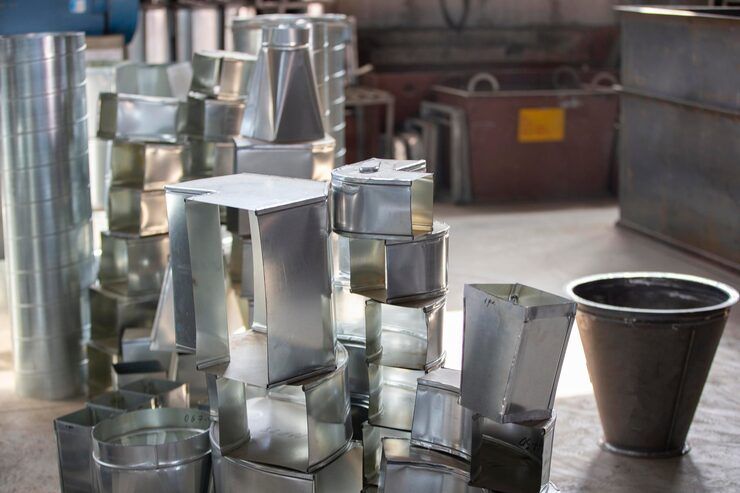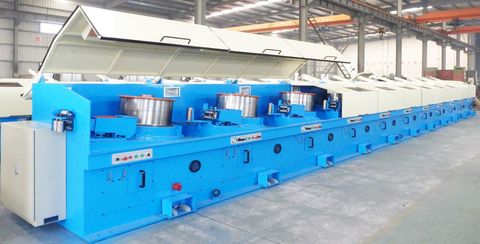Customer Guide to Stainless Steel: Long-Lasting and Cost-Effective Material
Stainless steel is an alloy primarily made from iron, chromium, and nickel, designed to resist rust and corrosion. Its unique composition allows it to form a thin, protective layer of chromium oxide that prevents oxidation. This makes it one of the most durable, hygienic, and low-maintenance materials used across industries.
The material was first developed in the early 20th century to address the limitations of regular steel in harsh environments. Today, it is found in applications ranging from household utensils to complex medical devices, bridges, automobiles, and skyscrapers.

Importance – Why stainless steel matters today
Stainless steel plays a vital role in modern life, offering a mix of performance, affordability, and sustainability. Its benefits affect industries, businesses, and individuals alike:
-
Durability: Resistant to corrosion, heat, and wear.
-
Hygiene: Easy to clean, making it essential in kitchens, hospitals, and laboratories.
-
Sustainability: Fully recyclable without losing its properties.
-
Aesthetic appeal: Offers sleek finishes in architecture and design.
-
Cost-effectiveness: Long service life reduces replacement and maintenance costs.
Industries most affected include construction, transportation, energy, consumer goods, and healthcare. For everyday consumers, stainless steel ensures safe food preparation, clean water supply, and reliable infrastructure.
Recent Updates – Trends and developments in stainless steel
The stainless steel sector has seen notable updates in recent years:
-
Sustainability Focus (2024–2025): Factories are increasingly using recycled scrap metal to reduce emissions and energy use.
-
Global Market Growth: According to industry data, the stainless steel market is projected to grow steadily, reaching over 60 million metric tons by 2025.
-
Innovation in Alloys: New stainless steel grades are being developed for extreme environments, including high-chloride and cryogenic applications.
-
Green Buildings: Stainless steel is being adopted in eco-friendly construction projects for its long life and recyclability.
-
Digital Supply Chains: Online platforms now make it easier to compare suppliers, check certifications, and ensure traceability.
Example table showing key industries and usage:
| Industry | Stainless Steel Use Example | Key Benefit |
|---|---|---|
| Construction | Bridges, facades, roofing | Durability & design |
| Healthcare | Surgical tools, hospital equipment | Hygiene & safety |
| Food Industry | Kitchenware, food processing plants | Cleanliness |
| Energy | Pipelines, nuclear power plants | Corrosion resistance |
| Transportation | Car parts, trains, ships, aircraft | Strength & weight |
Laws or Policies – Regulations influencing stainless steel
Stainless steel production and usage are subject to global and national regulations:
-
EU Standards (EN 10088): Define composition and mechanical properties of stainless steel grades.
-
FDA Regulations (USA): Stainless steel used in food contact surfaces must meet hygiene and safety requirements.
-
ISO Standards (ISO 15510, ISO 3506): Cover stainless steel chemical composition and mechanical properties.
-
Environmental Policies: Many governments encourage use of recyclable materials, including stainless steel, under green building codes.
-
Trade Regulations: Anti-dumping duties and tariffs affect global supply and pricing, particularly between Asia, Europe, and the USA.
These policies ensure stainless steel remains safe, reliable, and environmentally responsible.
Tools and Resources – Helpful references for customers
For businesses and individuals looking to understand or source stainless steel, these tools and resources can help:
-
Material Databases:
-
MatWeb (www.matweb.com) for alloy properties
-
AZoM (www.azom.com) for material research
-
-
Cost Calculators: Online stainless steel weight and cost calculators for estimating project expenses.
-
Standards Access: ASTM International and ISO websites for official standards.
-
Design Tools: CAD libraries offering stainless steel components for architects and engineers.
-
Industry Associations: International Stainless Steel Forum (ISSF) and national metal associations provide updates and guides.
FAQs
Q1: What makes stainless steel different from regular steel?
Stainless steel contains chromium, which forms a protective oxide layer, making it resistant to rust and corrosion unlike regular carbon steel.
Q2: Is stainless steel environmentally friendly?
Yes. It is 100% recyclable and can be reused indefinitely without losing its properties. Many factories already use recycled stainless steel as raw material.
Q3: What are the most common grades of stainless steel?
The most widely used are 304 and 316 grades. Grade 304 is common in kitchenware, while grade 316 offers higher corrosion resistance for marine and chemical applications.
Q4: Does stainless steel require special maintenance?
Not much. Simple cleaning with water and mild detergents is usually sufficient to maintain its shine and performance.
Q5: Why is stainless steel cost-effective in the long run?
Although initial costs can be higher, its durability, low maintenance needs, and recyclability make it more economical over time.
Final Thoughts
Stainless steel is more than just a material; it is a foundation for modern, safe, and sustainable living. From everyday household products to large-scale infrastructure, its versatility and longevity make it one of the most valuable resources available.
As industries continue to embrace sustainability and innovation, stainless steel will remain a cornerstone for cost-effective and environmentally responsible design. For customers, understanding its benefits, updates, and regulations can help in making informed and confident decisions when choosing this material.






